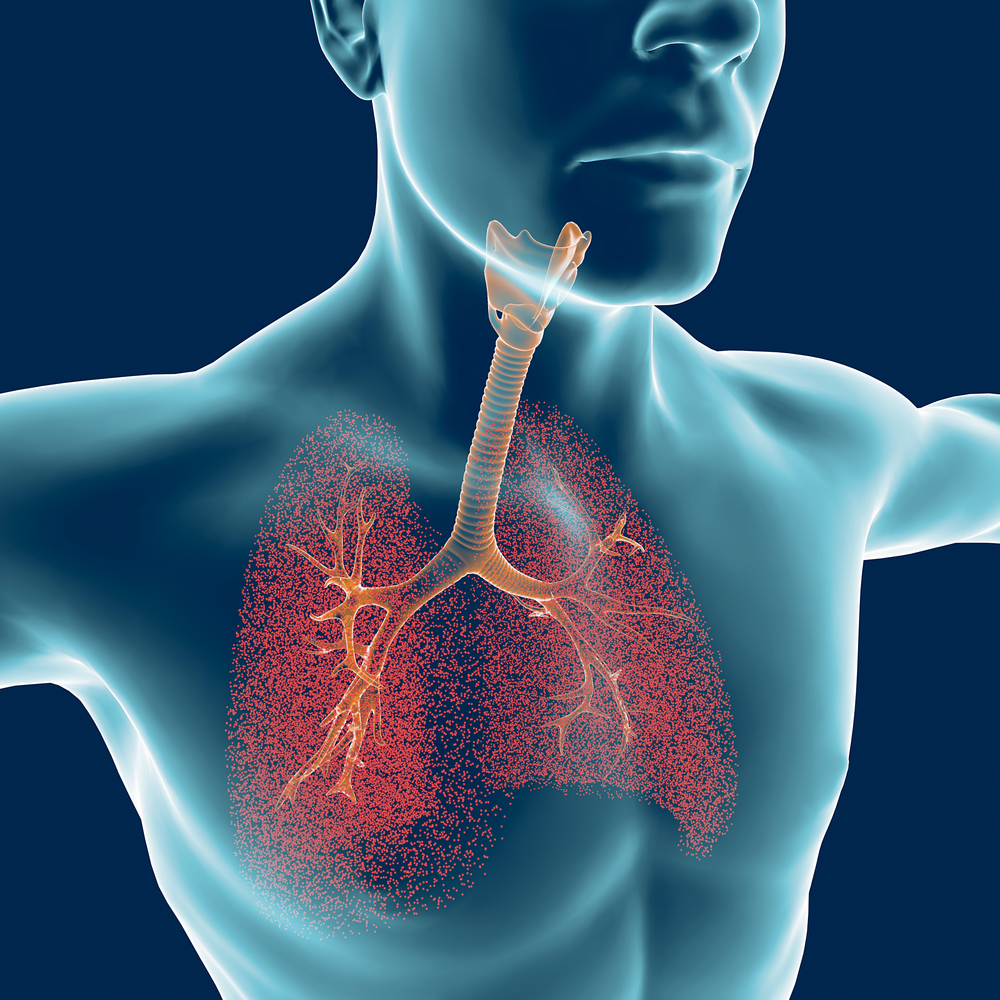Daily Breathing Exercises Seen to Slow Progression in IPF Patients
Written by |

Naeblys/Shutterstock
Simple breathing exercises as an add-on therapy can safely slow lung function decline and improve quality of life in people with mild to moderate idiopathic pulmonary fibrosis (IPF), a small study reported.
After six months of disease-tailored and daily breathing exercises, participants showed significant gains in several measures of lung health. At 12 months, they also had significantly improved exercise capacity, with lower rates of lung function decline and mortality, than did a control group of patients who continued with their regular medications.
The study, “New pulmonary rehabilitation exercise for pulmonary fibrosis to improve the pulmonary function and quality of life of patients with idiopathic pulmonary fibrosis: a randomized control trial,” was published in the journal Annals of Palliative Medicine.
Lung rehabilitation through exercise is a key therapeutic approach for IPF. Exercise can improve cardiovascular function, physical activity, and life quality, and effectively lower IPF-associated disability and mortality rates.
However, current lung rehabilitation exercises involve the whole body, which can be challenging for many with IPF due to poorer lung volume and breathing difficulties.
A team of researchers in China developed a set of exercises, called LHP’s Respiratory Rehabilitation for Pulmonary Fibrosis (LHP’s RRPF), specifically for this patient group.
Done consecutively, these exercises involve slow and gentle arm movement while inhaling (raising arms) and exhaling (lowering arms) with repeated focused breathing — deep whole-lung breaths, deep breaths of the lower part of one lung (followed by the other lung), and deep upper-lung breaths.
“The design is scientific for pulmonary fibrosis patients, it is simple, and effective,” the team wrote. “Patients can easily learn the 3 sets of simple limb movements combined with deep breathing after being properly trained.”
Researchers now sought to determine if the exercises were safe and able to improve lung function in people with IPF. Lung function was assessed through measures of forced vital capacity (FVC), forced expiratory volume in one second (FEV1), diffusing capacity of the lungs for carbon monoxide (DLCO), and vibration response imaging (VRI; a tool that records and quantifies lung sounds).
They also investigated whether the exercises could enhance patients’ quality of life, using St. George’s Respiratory Questionnaire (SGRQ) scores, and their functional exercise capacity, as evident in changes in the six-minute walk test (6MWT). Lung function, life quality, and exercise capacity were measured at six and 12 months after the study’s start.
After finding the exercises to be safe and able to “effectively expand the volume of different parts of the lung” in 20 healthy volunteers, the team tested them in 82 people with IPF — 39 randomized to the breathing exercise group and 43 to usual care as a control group.
The majority of patients in both groups were male, with a mean age of about 65, and a mean disease duration of 14.47 (controls) and 15.97 (exercise) months. All were being followed at a Shanghai clinic, and were able to walk at least 100 meters (about 330 feet) on the 6MWT.
Of those in the exercise group, three withdrew due to IPF worsening, 28 completed the six-month assessment, and 22 finished the 12-month evaluation. In the control group, seven withdrew due to IPF worsening, and two died (one due to spinal surgery complications and another of lung cancer). In total, 22 control participants completed the six-month assessment and 17 finished the 12-month assessment.
FVC declined in patients in both groups at six months compared with values measured at the study’s beginning (baseline). However, those in the breathing exercise group displayed a significantly lesser reduction in FVC than the control group. FEV1 and DLCO measures were also significantly better in the exercise group relative to control patients at six months.
Furthermore, while no statistical difference in the quality-of-life scores between the exercise and control groups were evident, there were significant improvements in the exercise patient group’s SGRQ scores after six months compared to baseline.
Distance covered in the 6MWT at six months was largely unchanged in the exercise group, but declined in the control group.
After 12 months of breathing exercises, lung function, quality of life, and exercise capacity further improved in the exercise group. And while none of these patients showed a decline in lung volume — with 10 showing greater lung volume on chest X-rays — six control group patients had reduced lung volume, the researchers reported.
Fewer exercise group patients had a IPF exacerbation over the study’s year (7.69%) compared with the control group (20.9%), and their one-year mortality rate was also lower (2.56%) relative to control patients (9.3%).
No adverse events were reported among the exercise group.
Overall, the researchers concluded that “LHP’s RRPF can delay the pulmonary function decline of patients with IPF and improve their quality of life.”
The team noted, however, that it was challenging to consistently perform the exercises in the same way throughout the study’s 12 months, and adaptations are needed to ensure the best possible outcomes in people with IPF performing them. These exercises are also unsuitable for people with severe disease needing constant ventilation support, they added, but of likely benefit to those with mild to moderate IPF.
With a duration of four to six minutes for each set and a “focus on exercising the respiratory muscles and minimally involve other muscles of whole body … the exercises did not cause excessive oxygen consumption,” the researchers wrote.
“LHP’s RRPF is safe, effective, easy to perform, no cost, and suitable for patients with IPF,” they concluded. “The LHP’s RRPF may be an adjunct to pulmonary rehabilitation for IPF.”







